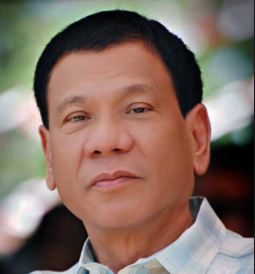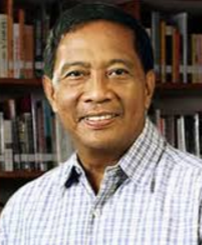Screening the Candidates on Job Creation
Part of an #Election2016 series called “Public Choice”
AIMING FOR THE MIDDLE
The Philippines is now at a critical stage in its development. A majority of Filipinos now have the audacity to dream and aspire for a more comfortable life; if not for themselves, then for their children. The National Economic Development Agency (NEDA) uncovered this in its AmBisyon Natin 2040 project, which sought to develop a long-term vision for the Philippines. From face-to-face interviews with 10,000 participants, NEDA found that
An overwhelming majority of Filipinos aspire for a simple and comfortable life (79%) … For Filipinos, a simple and comfortable life is described as having a medium-sized home, having enough earnings to support everyday needs, owning at least one car/vehicle, having the capacity to provide their children’s college education; and going on local trips for vacation.
The “Filipino Dream” is the typical middle class life. The key to attaining this dream is securing gainful employment, not abroad, but at home. The challenge for the Philippines is generating enough quality jobs for its growing workforce throughout the country. The magic figure of one million jobs per year has been the elusive target (see chart above).
According to NEDA Director General Emmanuel Esguerra, the likelihood of reaching this vision by the year 2040 depends on the policies adopted to foster growth and reduce social inequality over the coming 25 years. The vision will be achieved gradually, through reforms sustained over four succeeding administrations.
Under NEDA’s projected ‘best case’ scenario, the Philippines, despite having just returned to the growth rates set 40 years ago, would need to undergo another ‘economic takeoff’ to bring that dream closer. With rapid, inclusive growth, the eradication of poverty could happen as early as 2030, ten years earlier than under the worst case scenario of slow, unequal growth.
BROAD VERSUS TARGETED?
Building infrastructure, fostering competition and innovation, and investing in human capital (health, education and social protection) are needed to create a suitable economic environment, according to Esguerra. But aside from the broad macro policies aimed at improving the business climate, targeted industry strategy aimed at diversifying the economy is needed, according to the Asian Development Bank’s Norio Usui. This is because
To achieve inclusive growth, the Philippines needs to develop a stronger industrial sector to create productive job opportunities for the growing labor force. However, as the growing literature in industrial development illustrates, industrial upgrading and diversification are unlikely to take place without public intervention due to market failures in information, coordination and externalities.
The importance of industry strategy in achieving our growth potential, in counteracting the problems of premature deindustrialization, and in avoiding the “middle income’ trap” while maximizing the “demographic dividend” has been recognized (see my previous post to see what these terms mean). The Comprehensive National Industrial Strategy released by the Department of Trade and Industry states
The Comprehensive National Industrial Strategy (CNIS) will link and integrate manufacturing, agriculture and services; address supply chain gaps; and deepen industry participation in global value chains.
The CNIS contains a set of roadmaps for developing twenty product categories under manufacturing, six under agriculture and two under services. What is not clear is how the government identified these products and services. What is also not clear is how different this strategy would be to previous government attempts at attracting investments and diversifying the economy.
Despite its long history (dating back to the early 1970s) of targeted public support for both domestic and foreign investors through investment promotion agencies that used fiscal incentives such as income tax holidays, exemptions to value added tax and import duties, direct foreign investment into the Philippines has been lower than its ASEAN neighbors (see chart below). The diversification of its export basket has not occurred save for a few successes in electronics and fishery products, nor has industry upgraded to move up the global value chain.
Investments (as a % of GDP)
Source: IMF World Economic Outlook
On top of that, empirical evidence suggests that the fiscal incentives offered to investors have been regarded as redundant by over 50% of firms, meaning the investments would have taken place even without the incentives. The lack of a sound, systematic way for granting these perks has been perceived as inefficient and a source of corruption, according to UP economist Renato Reside, Jr.
The tax leakage due to these redundant fiscal incentives has been estimated at 1% of GDP. That amount could easily pay for lowering individual and corporate income taxes, or could be better spent providing sector specific infrastructure, enabling technologies, research and development, skills development and other targeted support to industries.
WHAT THE CANDIDATES ARE PROPOSING
Now that we have seen what the issues and challenges are, let us have a look at what the candidates are proposing.
Mar Roxas
From his Comprehensive Policy Document, Mar Roxas has stated the following with respect to job creation and economic management. I include a short assessment of each of his statements below:
| Proposals | Assessment |
| Further develop the manufacturing and tourism industries and boost productivity of the agriculture sector to spur jobs creation in these sectors of the economy. | Easier said than done. To be fair this is more of a general statement of intent rather than a specific policy proposal. This answers what needs to happen. There is no doubt about that. The problem is in how to go about it. Productivity is a vexed question. There is no indication in this statement whether the candidate has a handle on it. |
| Expand infrastructure and the interconnectivity of different sectors of the economy to improve access to and encourage the creation of employment opportunities. | Motherhood statement. The candidate is saying all the right things, but what do they really mean? What does he mean by “expanding infrastructure” or “interconnectivity”? This has to be treated as a motherhood statement. |
| Make higher investments in technology to provide internet connectivity to all communities, particularly those in far-flung or relatively rural areas, towards making the most of the opportunities available online. | Pipe dream. This sounds like a pipe dream because of its vagueness. Who is going to be doing the investing in “technology to all communities”? It sounds like he means a national broadband network, but who will own it? How will it be delivered and funded? |
| Devolve labor market information to each barangay (for workers) and to each city and municipality (for employers) to facilitate skills-job matching. Devolve dissemination of market information to barangays for the efficient adaptation of goods and services according to inputs and demand. | Looks good on paper. Is it practical to have labor market information down to the barangay level? Skills-job matching is more than just an information problem, it also involves developing skills through training and development. Yet the candidate seems to think it can be addressed solely by “finding the right match”. |
| Study and develop flexible and lawful work arrangements to adapt to the needs of employees and employers, thereby securing humane working conditions and encouraging the creation of jobs. | Too vague. I believe the candidate is using coded language to hide what he really means because it would be unpopular. Flexible labor contracting implies being able to “fire at will”. In countries with unemployment insurance, there is “flexicurity” – flexible labor markets combined with security of income. This would be a way to address the problem, but the candidate is silent on it, saying he will “study” first. |
| For youth employment, provide assistance by exempting first-time jobseekers from government licensing, clearance, and permit fees, as well as by providing jobseeker counseling in every barangay to facilitate efficient skills-jobs matching among the youth. | Helpful but insufficient. This helps to lower the cost of job hunting, but it does not address the problem of generating new jobs or the skills required to perform them. |
| Create an environment that will unleash the entrepreneurial talent of every Filipino and further simplify and standardize processes for business licensing and regulation. | Motherhood statement. This is the motherlode of motherhood statements. Ever since he was secretary of trade, the candidate has been talking about cutting red tape, but up to now has not really offered a real, practical solution. |
| Implement mechanisms to make credit more easily available to Filipinos who wish to start an SME, or to those with the goals of expanding their SMEs. | Nothing new. He says he will “implement mechanisms” but these are already in place since he was secretary of trade and industry. There does not seem to be anything new here. |
| Continue the establishment of Negosyo Centers in every city and municipality. | Nothing new. The law is existing, and the roll-out of these centers is ongoing, so what else is new? |
Grace Poe
In her 20 Point Agenda, Sen. Poe has outlined the following priorities for job creation. I provide a brief commentary against each of her policy planks.
| Proposals | Assessment |
| We will make infrastructure development our priority, whether in terms of streets, trains, airports, seaports or the internet. I will strive to increase the annual infrastructure budget to 7% of the GDP. | Necessary, but how? The government claims to have allocated 5% of GDP to infrastructure in the 2016 budget, however, the chronic problem of underspending could cause it not to spend that much. How will the candidate raise that to 7%? |
| The government will support the private sector in formulating an industrialization and IT plan. As more products “Made in the Philippines” flourish, more jobs will be created. This should be done while taking care of our environment. | Nothing new. The government is already doing this through the CNIS as stated above. |
| We have one of the highest tax rates in the world. My aim is to lower these. | Too vague. So what is her specific plan? How much lower does she plan tax rates to be and what is her timetable for doing it? |
| We need to find a way to lower power costs. In many parts of Mindanao, brownouts are a frequent occurrence. We will ensure sufficient power to fuel a growing economy, especially in Mindanao. We shall see to the development of renewable energy. | Easier said than done. “Just because you say it, doesn’t mean it’s gonna happen.” The government has already commissioned the construction of coal powered plants in Minadanao. Will she scrap this when she assumes office? |
| We should build more roads and trains not only in Metro Manila but all over the Philippines. We should ensure that our train project is awarded to a contractor with strong capability and track record in long-term maintenance. We should clean our drainage systems. We should provide coats and boots for the people who manage our traffic. We should remove all colorum and illegally parked vehicles. We should implement staggered office hours. No roadwork should be left unfinished. We should immediately fire contractors who don’t stick to the approved timetable. | Coulda, woulda, shoulda. There is a difference between saying “I should” from saying “I will”. You can say “I should lose weight” but that doesn’t mean that you will. The candidate loves to say “should” a lot, but does not really provide any detail or specifics of what she means. Saying “we should” is also consistent with not doing it. You can say “I should exercise” and not do it, and you would not be lying or reneging on a promise. It may be a case of semantics, but words mean a lot, especially when you are running for the highest office in the land. |
| The internet is just like a highway. It is a conduit for information. It should be fast. Many jobs will become more productive with faster internet connection. Kids will finish their homework faster and we can more easily talk to our loved ones working overseas without any Skype delays. When it comes to the internet, connecting should not take Forever. | Platitudes. The candidate’s penchant for platitudes has been a perennial problem for her since her 2013 campaign for the senate. This proves that she is really a policy lightweight. She claims that we have spent a long time trying old ways, and that it is time for new solutions. Well, she doesn’t seem to be offering anything new, just a bunch of platitudes. |
| Tourism is another sector that needs our attention. A vibrant tourism industry will create new jobs for Filipinos, even those in far-flung areas. Our country is filled with beautiful tourist destinations, but the industry will never fully succeed if we don’t provide sufficient infrastructure and build more airports. | Platitudes. This statement really commits her to nothing. It is too broad and filled with flowery platitudes. Also see above. |
Rody Duterte
From the Inquirer came the following policy pronouncements from Mayor Duterte on the creation of jobs and managing the economy. I include a brief assessment against each of them below:
| Proposals | Assessment |
| Revitalize basic industries like steel to create raw materials for downstream industries that are job generating. | Well intentioned. Trade liberalization led to the death of the steel industry in the country since it could not compete with imports. How would the candidate reverse this? |
| Initiate measures to curb the present practice of contractualization. | Easier said than done. Rather than seeing the problem of contractualization through the prism of class struggle, contractualization can be seen as a way for employers to adapt to the high costs of hiring labor. The problem won’t go away without treating the problem. Also see my comments regarding “flexicurity” under Roxas’s assessment above. |
| Prioritize agriculture and the processing of agricultural products to provide job and livelihood opportunities in the countryside, as well as increase farm incomes, farmers and fishermen being among the poorest of our population. | Easier said than done. These are statements of intent, but what exactly would pursuing these look like? There is no indication here as to what exactly the candidate plans to carry out. |
| Create the peaceful environment in the countryside to encourage investment beyond incentives (He promises to create island “Eco-zones” which would be turned over to private companies to run, similar to the Charter Cities concept of Paul Romer). | Possibly unconstitutional. The candidate’s proposal for special economic zones run by foreign capitalists could be challenged in the courts for violating certain provisions on sovereignty. This is not insurmountable, as was the case in Honduras but community consensus would be hard to come by simply judging from the response from cause oriented groups. |
| Lower electricity costs by encouraging smart grids and small scale power generation to include household solar power generation. | Easier said than done. The effect of introducing these reforms may in fact raise electricity costs for the remaining consumers that are still on the grid. The proposal needs to take this into consideration. |
| By prioritizing agricultural development, coupled with transportation infrastructure to link farm production with their markets, we can ensure accessibility and affordability of food, which is the biggest part of average household expenditures. | Panacea. Farm to market roads is a catch phrase of every single politician when discussing agricultural development. Food inflation has actually been benign quite recently. It is agricultural productivity that needs to be raised to raise farm incomes and increase national output. |
| Infrastructure gaps, whether in the countryside or in key urban centers, shall be prioritized and substantially filled, or at least initiated, during my term. | Too vague and too much wiggle room. This should be self-explanatory. |
Jejomar Binay
From the same Inquirer article quoted above comes a number of policy proposals by the Vice President for job creation and industry development. I include a brief commentary against each one below:
| Proposals | Assessment |
| A Binay administration will pursue the amendment of the economic provisions of the Constitution. We aim to ease the foreign ownership restrictions on key sectors as this will open up the economy further–a major factor in attracting more foreign direct investments (FDIs). More FDIs mean more jobs and livelihood for Filipinos. | Risky, but it’s about time. At a time when emerging economies like Indonesia, Vietnam and India are easing restrictions on foreign ownership to attract investors, the Philippines needs to follow suit or be bypassed once again. |
| Agriculture
A Binay presidency will create agricultural economic zones in key agricultural provinces and promote agricultural value-added processes to increase job creation, reduce post-harvest process and enhance output value. |
On the right track. More than building the oft-repeated “farm-to-market roads” the solutions being offered focus on the more crucial task of improving agricultural productivity and resilience through crop diversification and vertical integration in the value chain.
The CNIS identifies what these high value crops for both agriculture and fisheries are. Supporting this move would boost farm incomes. The amendment of CARP to strengthen property rights of farmers and to gain economies of scale through corporate farming is consistent with empirical studies, that point to the poor outcomes of the CARP and its extension and the need to re-think this program. The inability to absorb the risks of crop diversification and crop failure creates a ‘poverty trap’ for farmers that cannot get out of subsistence farming. The support arrangements mentioned lower that risk. |
| Business Process Outsourcing (BPO)
As the industry relies heavily on good Internet connection, the Binay administration will create a Department of Information and Communications Technology (ICT) to help improve the country’s IT infrastructure and help grow the BPO sector further. |
Necessary and long overdue. The creation of a Department of ICT is something that the industry itself supports and has been calling for for a long time. |
| Tourism
A Binay administration will develop, craft and implement a National Tourism Strategy that will link infrastructure development, support services and establishments, marketing and promotions plan, and development plans for tourism areas. |
Nothing new. The government began drafting this plan under the previous administration, and a National Tourism Strategy was developed under the current one. All that remains to be done is to update and implement it. |
| Manufacturing and export
A Binay presidency will focus on policies and reforms that will allow expansion of this sector by improving infrastructure and technology/logistics to lower costs of production, establish finance support programs for small- and medium-scale enterprises, streamline the bureaucratic process such as establishing one-stop shop, ensure affordable energy/power cost, continue to produce strong and highly-skilled workforce and encourage domestic linkages for raw materials. |
On the right track. Targeted industry policy focused on reindustrialization is needed. The CNIS has identified several categories under manufacturing that will be targeted. Implementing the various roadmaps for each of them needs support from the top. |
The comments above are not meant to provide an endorsement to any one candidate. They show that the candidates still have much to clarify and refine in their policy statements. With the coverage of the race dominated by popularity polls and personalities, this series is meant to fill a void by providing an assessment based on principled policy platforms.





